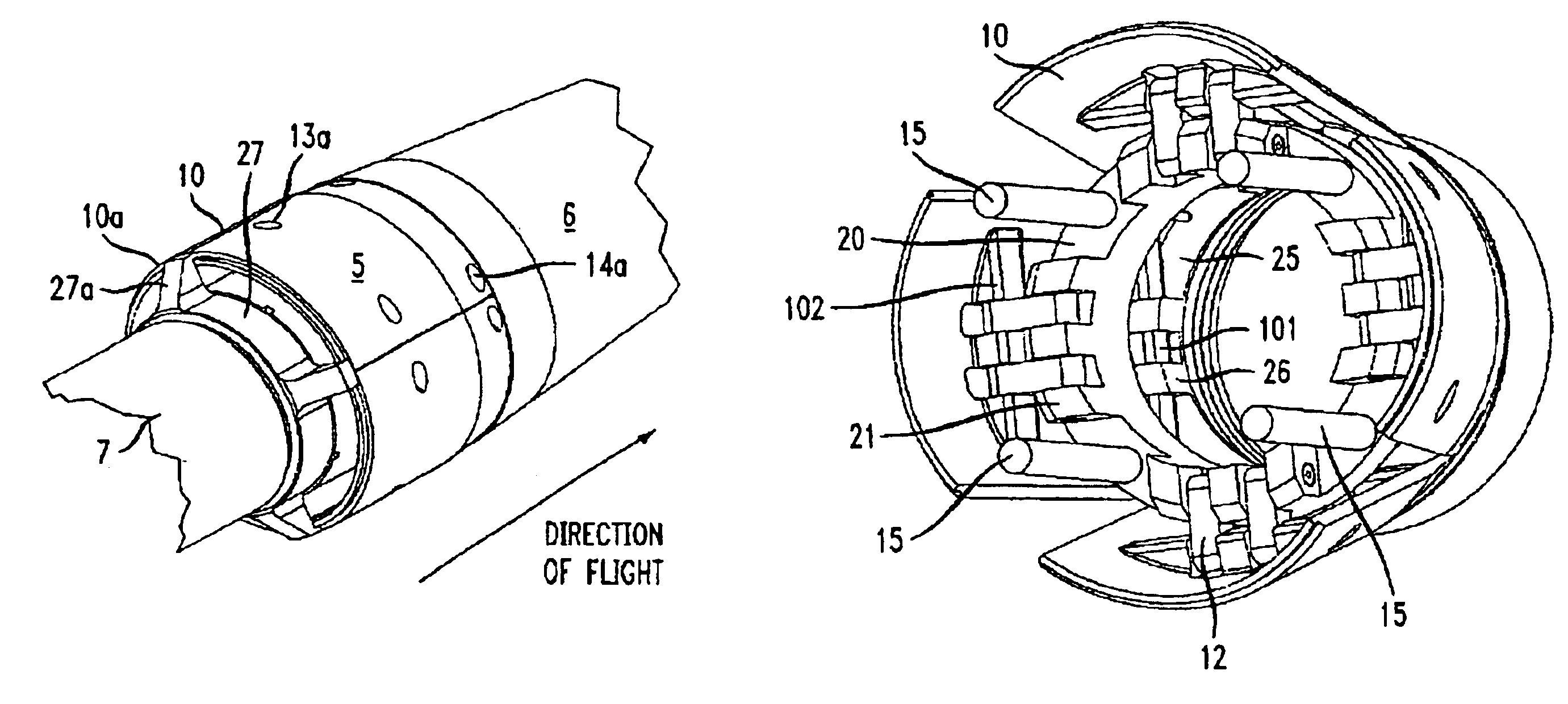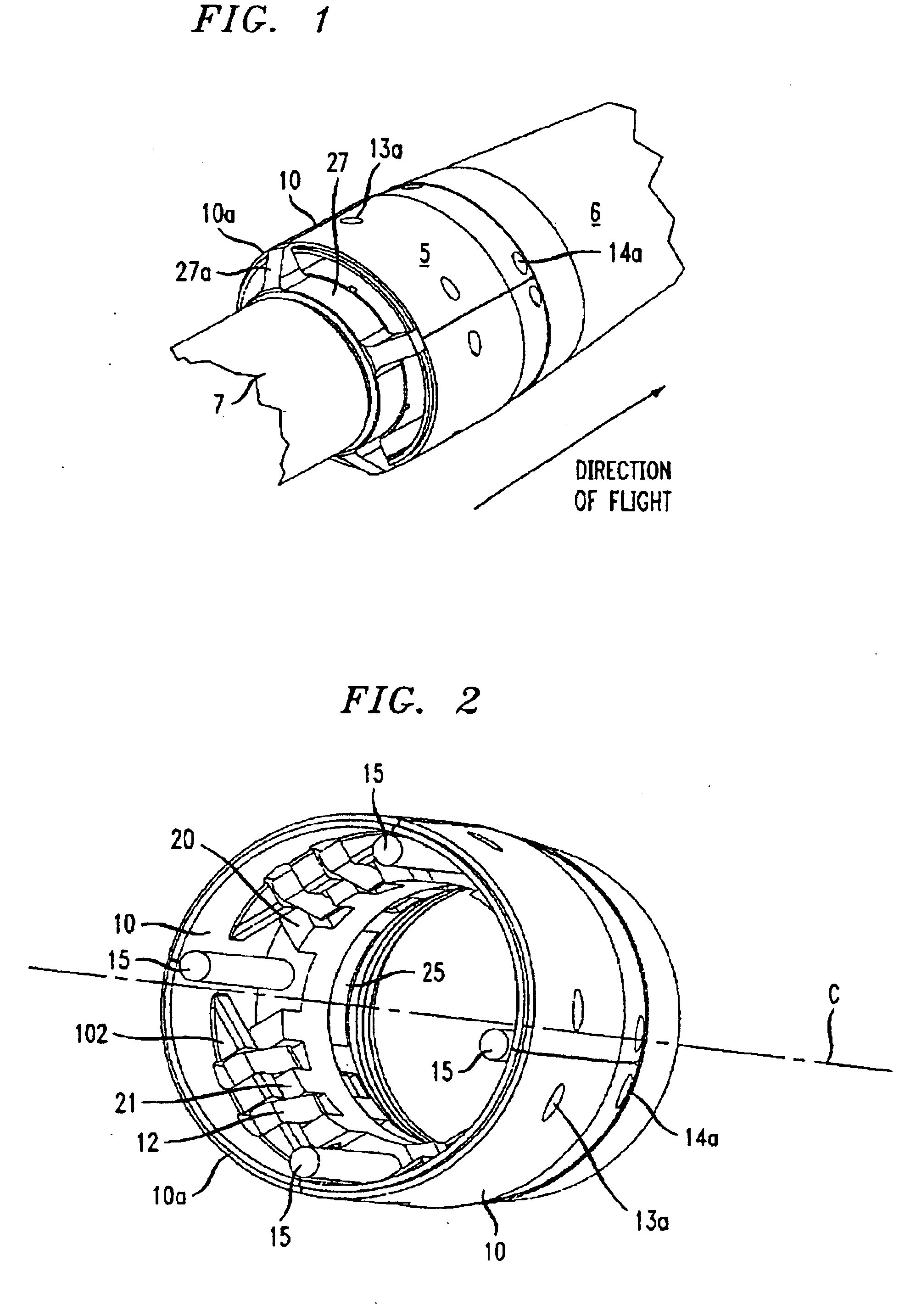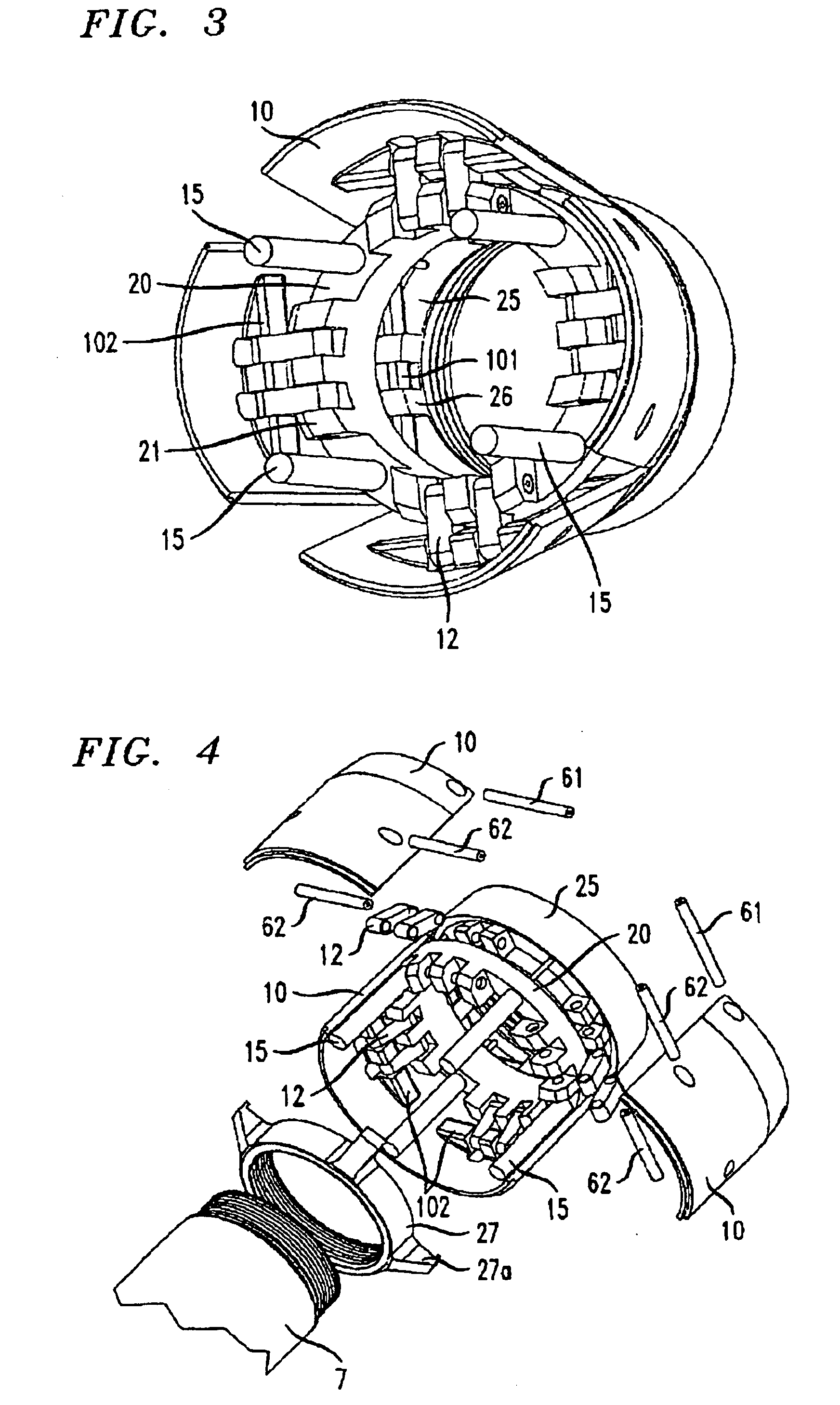Deployable flare with simplified design
- Summary
- Abstract
- Description
- Claims
- Application Information
AI Technical Summary
Benefits of technology
Problems solved by technology
Method used
Image
Examples
Embodiment Construction
FIG. 1 shows a flare 5 embodying the principles of the present invention attached to a projectile 6 whose intended direction of flight is as shown. An aft body 7 extends through the center of flare 5 and is attached to the internal body of projectile 6.
The construction of flare 5 can be seen in FIGS. 2 through 4. The flare includes a threaded support ring 25 that threads onto projectile 6, with an aft portion of projectile 6 (not shown) extending through the center of the flare. Attached to support ring 25 are four petals 10 arrayed in a first position around central axis C of the flare. Petals 10 are each in the form of a cylindrical segment whose side edges meet to form a cylinder whose central axis is coincident with said axis of the flare.
A detailed view of one of the petals 10 is shown in FIG. 5. A hinge element 101 is disposed on the inside surface of petal 10 near its forward edge. The hinge element 101 of each petal mates with a corresponding hinge element 26 attached to sup...
PUM
 Login to View More
Login to View More Abstract
Description
Claims
Application Information
 Login to View More
Login to View More - R&D
- Intellectual Property
- Life Sciences
- Materials
- Tech Scout
- Unparalleled Data Quality
- Higher Quality Content
- 60% Fewer Hallucinations
Browse by: Latest US Patents, China's latest patents, Technical Efficacy Thesaurus, Application Domain, Technology Topic, Popular Technical Reports.
© 2025 PatSnap. All rights reserved.Legal|Privacy policy|Modern Slavery Act Transparency Statement|Sitemap|About US| Contact US: help@patsnap.com



